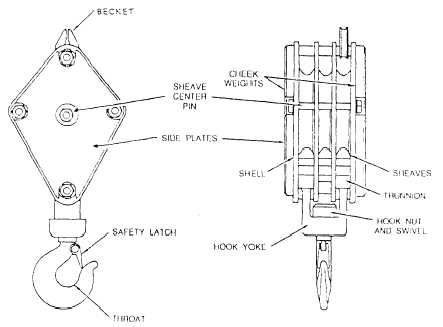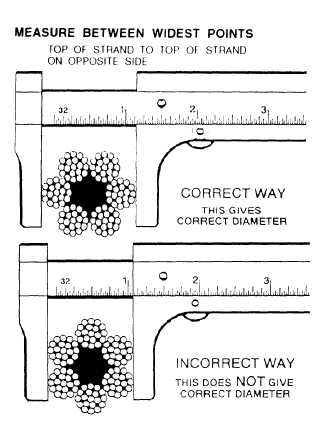Figure 12-37.—Measuring wire rope.
connections when there are any broken wires adjacent
to the end connection.
2. Boom pendant wire ropes. More than two
broken wires in one lay in sections beyond the end
connection or one or more broken wires at an end
connection.
3. Kinks or crushed sections. Severe kinks or
crushed rope in straight runs where the wire rope core
is forced through the outer strands.
4. Flattened section.
Flat sections where the
diameter across the flat section is less than five sixths of
the original diameter.
5. Wire rope wear. Measure wire rope with wire rope
calipers (fig. 12-37) to check for wear accurately. Replace
why rope that has wear of one third of the original diameter
of outside individual wires. A crescent wrench can be used
as an expedient means to measure wire rope.
Hook Block Inspection
The hook block and the hook are part of the ODCL
inspection. The operator must inspect the hook block
for cleanliness, binding sheaves, damaged or worn
sheaves, worn or distorted sheave pins, broken bolts,
and worn cheek weights (fig. 12-38).
The hook is inspected for damage, excessive wear
to the hook safety latch, hook swivel trunnions, thrust
collar, and securing nut. Also, the hook is inspected for
damage or missing lubrication fittings, proper
lubrication, cracks and gouges, and if visibly bent or
twisted.
Sheave Inspection
The sheaves inspection (fig. 12-39) is the inspection
for wear and damage, wear in the wire rope sheave
groove, loose or damage sheave guards, and worn
bearings and pins. Sheaves rotate on either bearings or
bushings that are inspected for discoloration (due to
Figure 12-38.-Hook and block inspection points.
12-24




